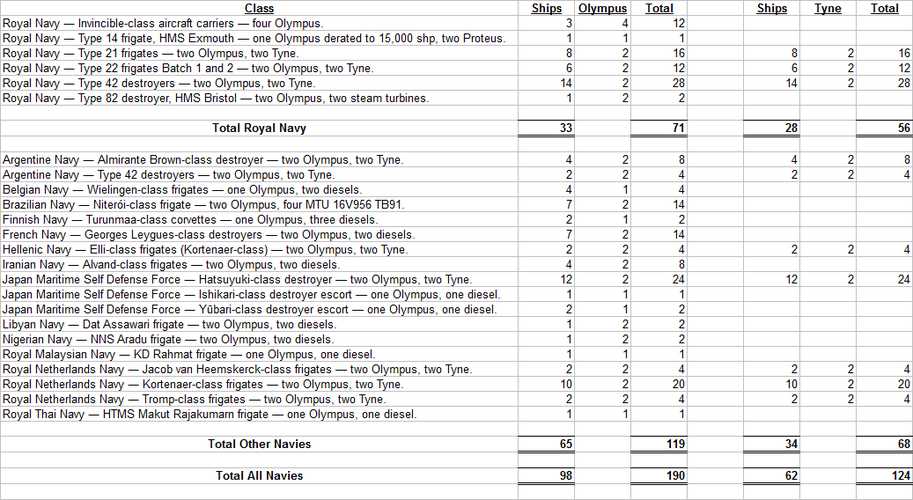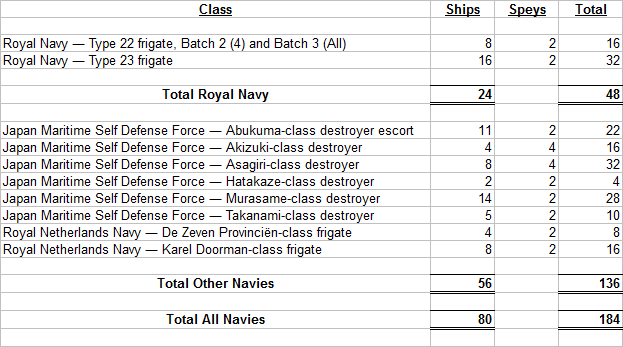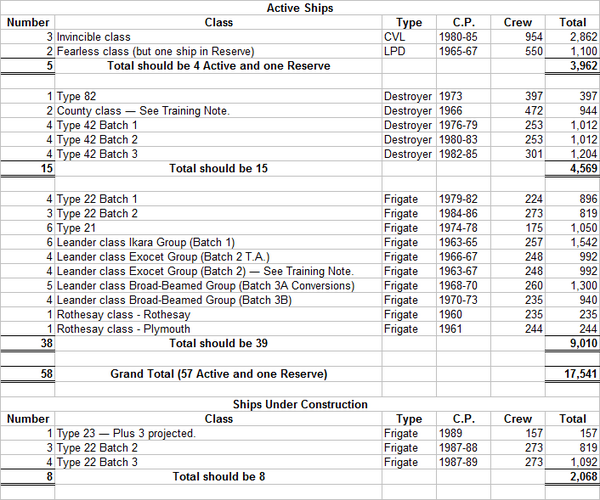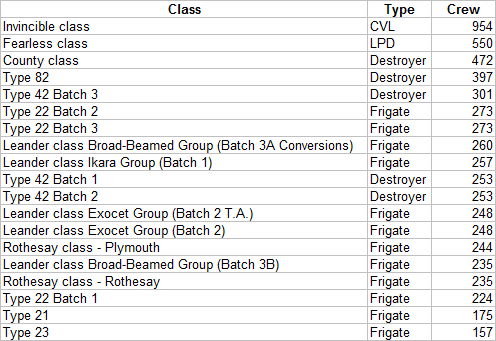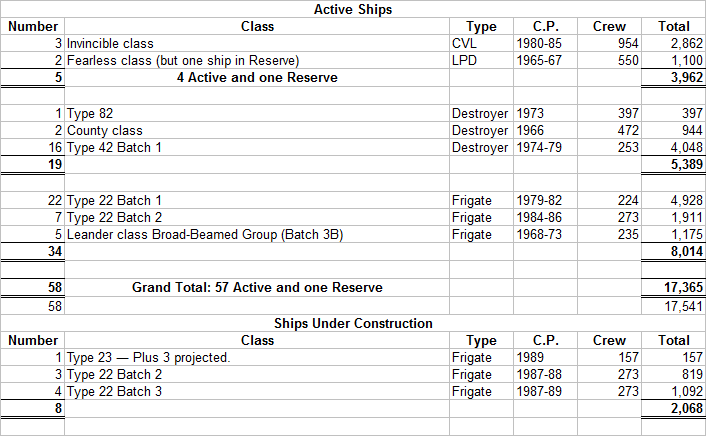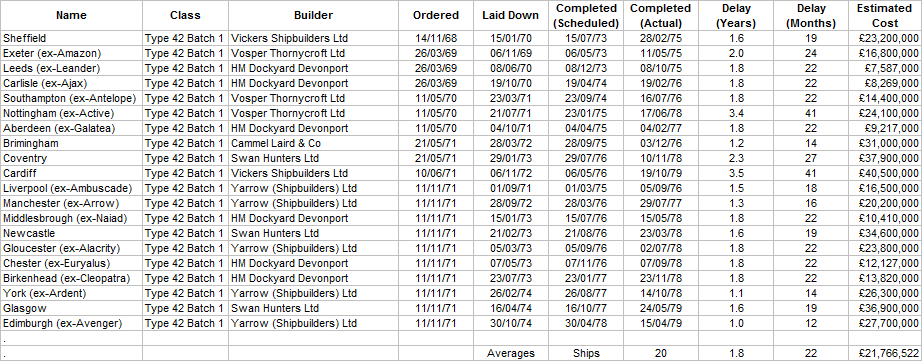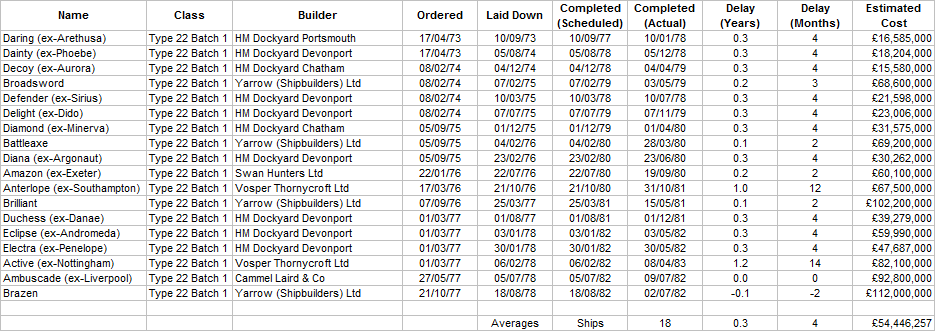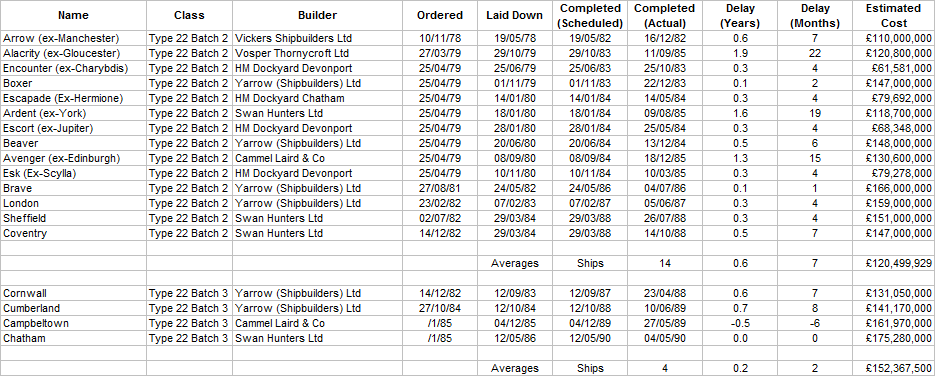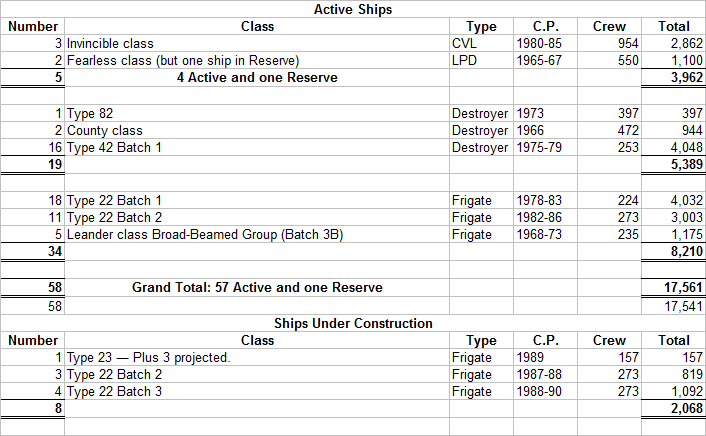- Joined
- 27 September 2006
- Messages
- 6,074
- Reaction score
- 6,188
The Royal Navy began the 1960s with two excellent classes of destroyer (County DLG).and frigate (Type 12 Leander) on order.
In 1966 the replacement of these ships with the T42 and T22 was set in hand.. In addition the T21 gp frigate was ordered to replace other frigate classes.
So not a lot of scope for an alternate line up. Or maybe?
The RN also had gun armed Daring and C class ships as well as Fleet picket ships in service.
The earlier Type 12 Whitby and Rothesay classes served alongside the Leanders (with the Rothesays getting Wasp helos).
The Tribal class frigates were mainly intended for East of Suez and looked somewhat out of place from 1970.
Salisbury and Leopard class Air Defence frigates also stayed in service together with ASW 2d rate ships.
Apart from Seaslug on the County DLG the only guided weapon on most of these ships was the basic Seacat SAM.
The lineup did not change much until the 80s except for 8 T21 and 3 T42 plus one T82 trials ship. The first four T22 arrived for the 80s.
Shuffling the deck of old and new ships kept RN escort numbers up until the end of the Cold War.
With hindsight the T42 and T22 should have arrived sooner and in greater numbers.
Many of the ships that remained in service in the 70s and 80s were not up to the task of confronting the growing Soviet Navy.
The Falklands ahowed that something like AEGIS was needed for the RN and work on a successor to the T42 dragged on until the T45 finally arrived in the 21st Century long after the Cold War had ended.
The USN with its greater resources was able to introduce the Spruance ASW destroyer, the Perry patrol frigate, the Ticonderoga and Burke AEGIS ships.
A bigger hull for the T42 and T22 ships would have been one useful change allowing better wquipment and weapons fits such as Phalanx CIWS and Harpoon SSM on all units.
Fewer better armed ships earlier would have been a better use of scarce resources. It did not help that Press and Politicians were obsessed with numbers of units.
The purchase of the Ghanaian frigate that became HMS Mermaid showed the challenges faced by the RN.
Of course the peacetime RN had other duties ranging from fishery protection (The Cod War).to training. The underarmed older units served well in those roles.
In 1966 the replacement of these ships with the T42 and T22 was set in hand.. In addition the T21 gp frigate was ordered to replace other frigate classes.
So not a lot of scope for an alternate line up. Or maybe?
The RN also had gun armed Daring and C class ships as well as Fleet picket ships in service.
The earlier Type 12 Whitby and Rothesay classes served alongside the Leanders (with the Rothesays getting Wasp helos).
The Tribal class frigates were mainly intended for East of Suez and looked somewhat out of place from 1970.
Salisbury and Leopard class Air Defence frigates also stayed in service together with ASW 2d rate ships.
Apart from Seaslug on the County DLG the only guided weapon on most of these ships was the basic Seacat SAM.
The lineup did not change much until the 80s except for 8 T21 and 3 T42 plus one T82 trials ship. The first four T22 arrived for the 80s.
Shuffling the deck of old and new ships kept RN escort numbers up until the end of the Cold War.
With hindsight the T42 and T22 should have arrived sooner and in greater numbers.
Many of the ships that remained in service in the 70s and 80s were not up to the task of confronting the growing Soviet Navy.
The Falklands ahowed that something like AEGIS was needed for the RN and work on a successor to the T42 dragged on until the T45 finally arrived in the 21st Century long after the Cold War had ended.
The USN with its greater resources was able to introduce the Spruance ASW destroyer, the Perry patrol frigate, the Ticonderoga and Burke AEGIS ships.
A bigger hull for the T42 and T22 ships would have been one useful change allowing better wquipment and weapons fits such as Phalanx CIWS and Harpoon SSM on all units.
Fewer better armed ships earlier would have been a better use of scarce resources. It did not help that Press and Politicians were obsessed with numbers of units.
The purchase of the Ghanaian frigate that became HMS Mermaid showed the challenges faced by the RN.
Of course the peacetime RN had other duties ranging from fishery protection (The Cod War).to training. The underarmed older units served well in those roles.
Last edited:

